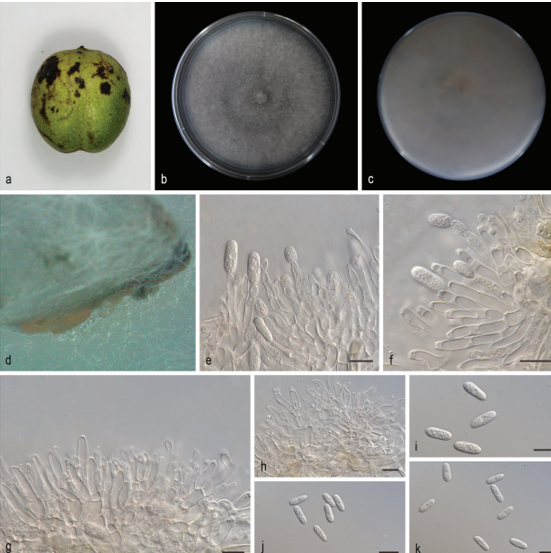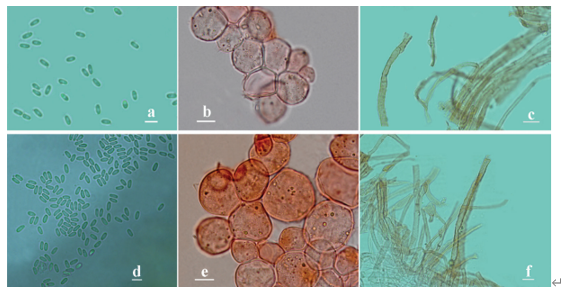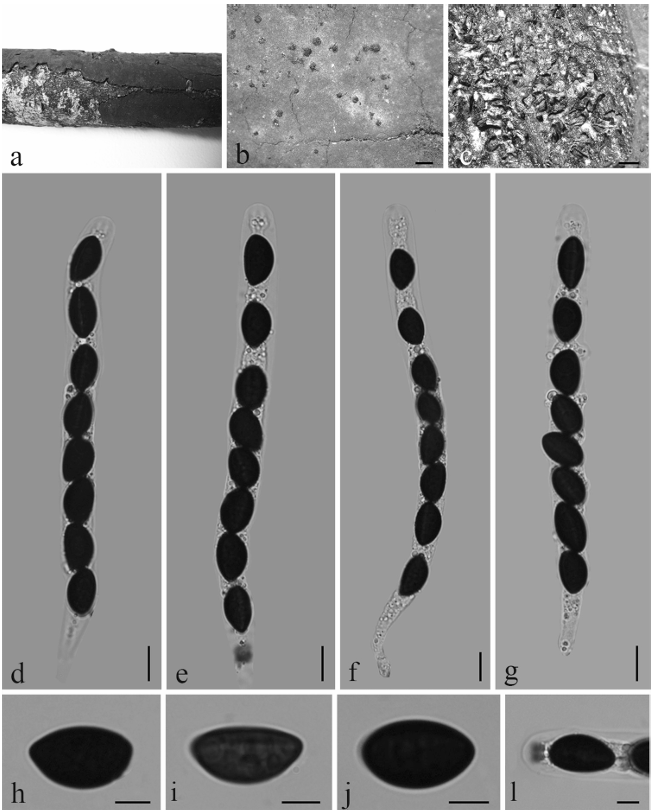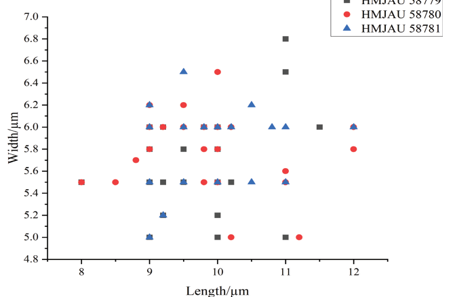Ophiocordyceps vespulae F.Y. Long & Y.P. Xiao, sp. nov.2021
Index Fungorum number: IF556626; Facesoffungi number: FoF 06237
Holotype: Collected from the Changbai Mountain, China , GACP2017079
Morphological description
Host 1.5–2 × 0.5–1 cm, brown. Stromata 3–7 cm long, 0.3–1 mm diam., single or double, stipitate, unbranched or branched into 2 fertile heads, arising from the head and thorax of insect. Stipe 2–6.5 cm long, 0.3–0.5 mm diam., yellow, fibrous, cylindrical, often flexuous, with a fertile apex. Fertile head 0.5–1 cm long, 0.5–1 mm diam., single, cylindrical or elliptical, pale yellow. Ascomata 520–720 × 200–380 μm ( = 596 × 260 µm, n = 30), immersed, pale to yellowish, elongated flask-shaped. Asci 320–570 × 5.3–7.5 μm ( = 454 × 5.8 µm, n = 60), narrow cylindrical, apex thickened, hyaline; apical cap 6.2–7.9 × 3.4–5.4 μm ( = 7.0 × 4.0 µm, n = 60), hyaline. Ascospores almost as long as asci, filiform, hyaline, easily breaking into part-spores. Secondary ascospores 7.5–11.5 × 1.5–3 μm ( = 9.1 × 2.1 µm, n = 90), fusiform, hyaline, smooth. Undetermined.
Cultures: On PDA reaching 5 cm diam. after 6 weeks at 25 °C, superficial cottony, white, reverse yellow; after 10 weeks at 25 °C, reaching 6 mm diam., no conidia observed.
Habitat: Parasitic on wasps (Vespula sp., Hymenoptera), collected from the underside of leaf litter.
Distribution: CHINA. Jilin Province: Changbai Mountain.
GenBank Accession: ITS MN044857; LSU MN044858; TEF1α MN117075; RPB2 MN107547.
Reference: Long, F. Y. , Qin, L. W. , Xiao, Y. P. , Hyde, K. D. , Wang, S. X. , & Wen, T. C. . (2021). Multigene phylogeny and morphology reveal a new species, ophiocordyceps vespulae, from jilin province, china. Phytotaxa.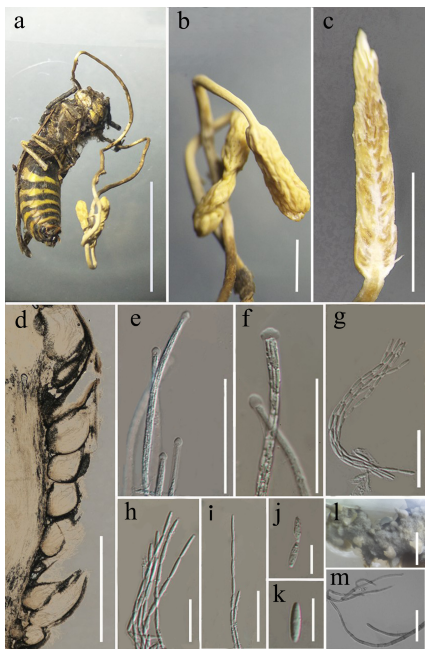 Ophiocordyceps vespulae. a. Overview of the stromata and the host. b. Fertile head. c. Longitudinal section showing the complete immersed perithecia. d. Ascomata. e–f. Part asci with apical cap. g–i. Part of ascospores. j, k. Secondary ascospores. l. Upper side of PDA culture. m. Hyphae in PDA culture. Scale bars a = 1 cm, b, c, l = 2 mm, d = 1 mm, e = 100 µm, f, m = 50 µm, g–i = 20 µm, j–k =10 µm.
Ophiocordyceps vespulae. a. Overview of the stromata and the host. b. Fertile head. c. Longitudinal section showing the complete immersed perithecia. d. Ascomata. e–f. Part asci with apical cap. g–i. Part of ascospores. j, k. Secondary ascospores. l. Upper side of PDA culture. m. Hyphae in PDA culture. Scale bars a = 1 cm, b, c, l = 2 mm, d = 1 mm, e = 100 µm, f, m = 50 µm, g–i = 20 µm, j–k =10 µm.


